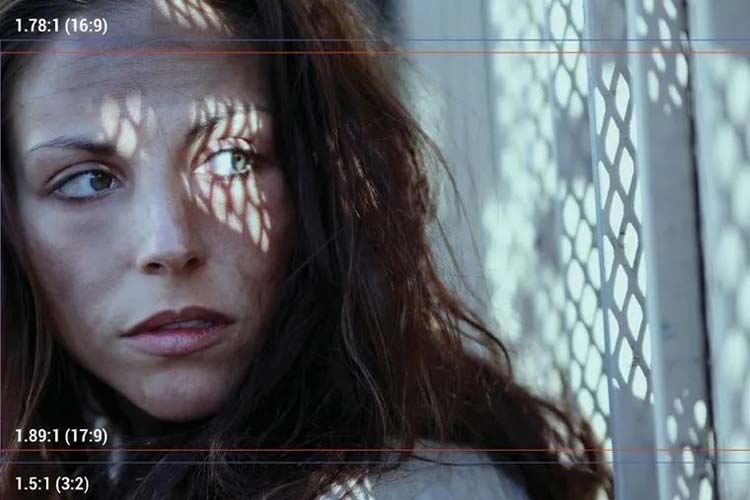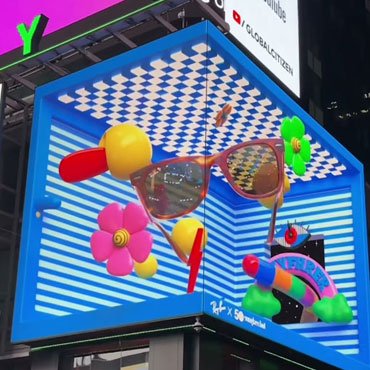16:9 vs. 4:3 are both common aspect ratios in our lives, so if the two were to go head-to-head, who would win? If you’re on the fence about this, don’t miss out on what’s coming up next!
About Aspect Ratio Definition
Perhaps you’ve noticed a pattern, 16:9 and 4:3, are both composed of two numbers, and if we were to say that there is indeed a difference between the two, then it’s clear that the former ratio (16:9) has a larger value than the latter (4:3). For this reason, it is easy to see that the aspect ratio is actually the ratio of the width of an image to its height. This ratio is a relative value, so you’ve probably heard this concept before in images, videos, or games.

Some readers may wonder if the width must be a little larger than the height value. Indeed, when we take a closer look at 16:9 and 4:3, we see that it seems that the former number is a bit bigger than the latter. In fact, this is just a coincidence, there are some display devices or images that use 9:16, 3:4 or 5:4 ratios, so the width is not necessarily larger than the height.
Historical reasons for 16:9 vs. 4:3 aspect ratios
The history of 16:9 vs 4:3 aspect ratios dates back to 1889. You may have guessed part of the reason for this, and yes, it was from the early days of projected movies that the current aspect ratio evolved.
In 1889, a young man named William Dixon was using a movie projector to show a film when he happened to cut in half the 70mm film used in Kodak cameras at the time for projection. This half of the film, which happened to be in the ratio of 1.33:1 or 4:3, was later widely used in cameras, televisions and industrial displays, which is where the 4:3 aspect ratio came from.

As to why such a ratio was popular at the time, it may have been a preconceived habit. In other words, if the ratio at the time happened to be 6:5, then perhaps the popular aspect ratio at the time was 6:5, not 4:3.
Beginning in the 1960s, studios began using wider film stock such as 2.59:1 and 1.85:1 to express more elements of the picture, and by cropping portions of it, they were able to get a 16:9 ratio.
This allowed the originally narrow screen to display richer content, which elevated the audience’s visual experience by a notch. 16:9 aspect ratios also laid the groundwork for modern high-definition screens, and some scholars have found that the 16:9 ratio is very close to the Golden Ratio, so whether it’s the expression or the wider field of view, it’s all part of what makes 16:9 aspect ratios so widely used.
What are the effects of the wrong aspect ratio?
The wrong aspect ratio tends to make the screen look a bit strange. The most obvious is when we play a video using the wrong ratio, we will notice two black backgrounds on either side of the video. Although videos and images now have autofill and adaptive techniques that allow you to spread the entire screen using the wrong ratio, this makes the picture either strange or not able to show all the details, which is a poor sensory effect. The image below demonstrates the strange visual effect of an image displayed in an improper ratio.

Aspect Ratio 16:9 vs. 4:3: What is the difference?
The main difference between the two is the shape. 16:9 is more rectangular, while 4:3 is closer to square. Therefore, if one is looking to show more space in a horizontal view, then choosing 16:9 is best. On the other hand, if you want to show more space in the vertical view, then 4:3 is better.
16:9 vs. 4:3: Which one is better?
A big part of the reason why both are in use today is that people have gotten used to both ratios, so there’s nothing wrong with whichever you choose. They are most widely used in videos and pictures, so let’s take a look at each.
16:9 vs. 4:3: Video
16:9 is more widely used than 4:3 aspect ratio. We find that mainstream video sites like YouTube, Netflix, Vimeo, etc. basically play videos in 16:9 ratio, which may have a lot to do with the fact that it can better support high-definition images. Some readers may wonder what would happen if we uploaded a different size. We tested a few different ratios and found that when the video is in a vertical ratio, such as 4:3 or 9:16, it will automatically place the video in the short video position, probably because this ratio is more suitable for mobile browsing.
In addition, since our eyes always scan horizontally, it’s easier to receive information when looking at a horizontal screen than a vertical one, allowing us to see more details of the screen when using the 16:9 ratio.
16:9 vs. 4:3: Photos
A big difference between photos and videos is that videos are usually not viewed side-by-side at the same time, whereas photos are often viewed side-by-side. Trying to view multiple images side-by-side in a limited amount of space means that we have to shorten the horizontal space of the photo. This is where the benefits of the 4:3 ratio come into play. By shrinking an image horizontally, we can place multiple images side-by-side on the screen at the same time.
More questions about 16:9 and 4:3
Are most TVs 4:3 or 16:9?
Back in the 90s, TVs were basically square with a 4:3 aspect ratio, but nowadays most TV’s on the market are in a 16:9 aspect ratio in order to adapt to HD picture quality formats.
Are 4:3 screens still useful today?
Of course, because there are still some old movies or classic TV programs that require this size. And since 4:3 screens are usually much less expensive, they will continue to be used in conjunction with 16:9 screens for a much longer period of time.
Is there a way to convert the two perfectly?
Due to the different ratios of the two, a direct conversion usually leads to problems with the picture. So, is there a perfect conversion to convert 4:3 to 16:9, or 16:9 to 4:3? Here is a possibly not particularly perfect solution dedicated to the group that needs to do the conversion.
We can shrink the image or video to be converted, and then use various borders to fill in the vacant white or black edges, to achieve a certain conversion effect.




